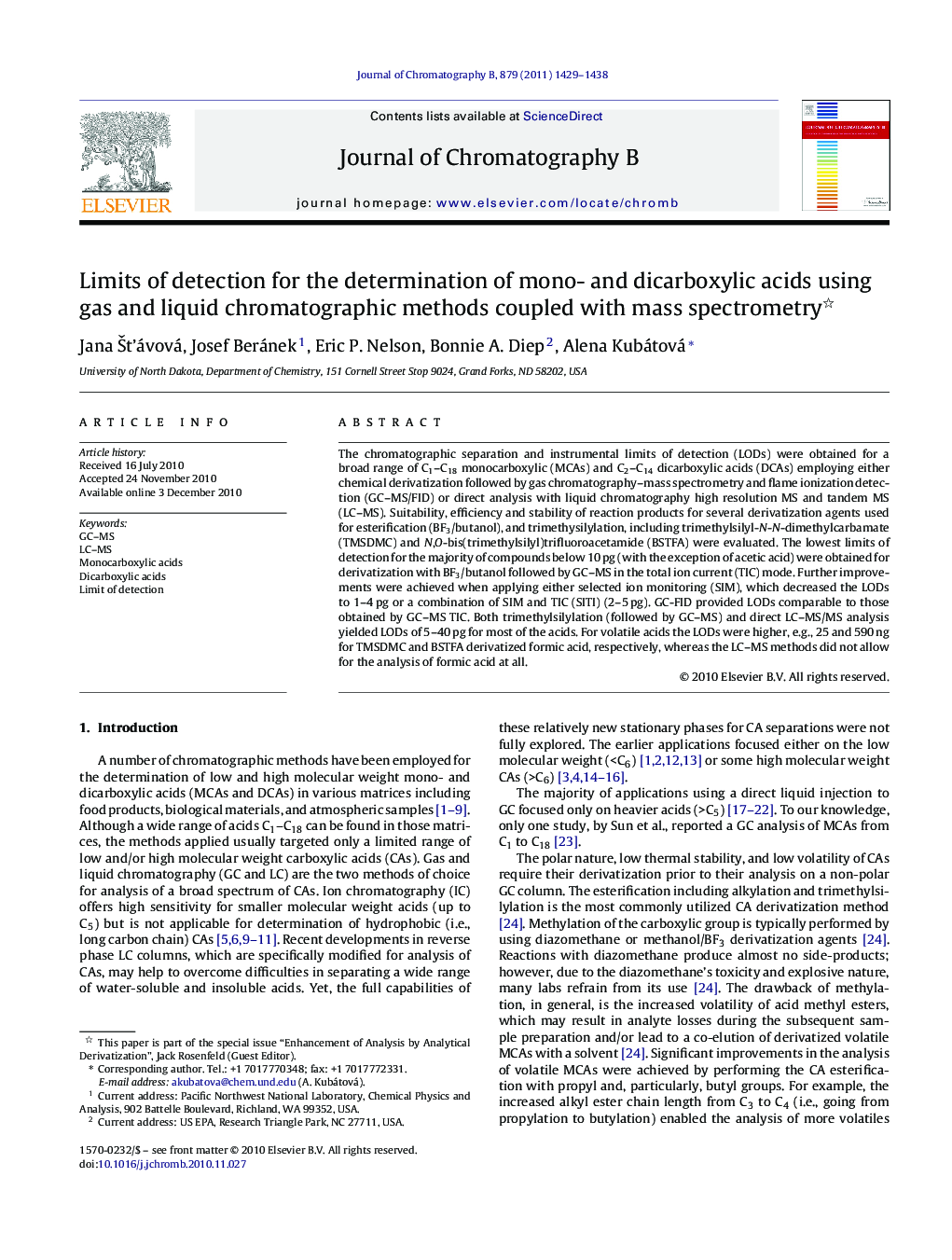| Article ID | Journal | Published Year | Pages | File Type |
|---|---|---|---|---|
| 1213436 | Journal of Chromatography B | 2011 | 10 Pages |
The chromatographic separation and instrumental limits of detection (LODs) were obtained for a broad range of C1–C18 monocarboxylic (MCAs) and C2–C14 dicarboxylic acids (DCAs) employing either chemical derivatization followed by gas chromatography–mass spectrometry and flame ionization detection (GC–MS/FID) or direct analysis with liquid chromatography high resolution MS and tandem MS (LC–MS). Suitability, efficiency and stability of reaction products for several derivatization agents used for esterification (BF3/butanol), and trimethysilylation, including trimethylsilyl-N-N-dimethylcarbamate (TMSDMC) and N,O-bis(trimethylsilyl)trifluoroacetamide (BSTFA) were evaluated. The lowest limits of detection for the majority of compounds below 10 pg (with the exception of acetic acid) were obtained for derivatization with BF3/butanol followed by GC–MS in the total ion current (TIC) mode. Further improvements were achieved when applying either selected ion monitoring (SIM), which decreased the LODs to 1–4 pg or a combination of SIM and TIC (SITI) (2–5 pg). GC-FID provided LODs comparable to those obtained by GC–MS TIC. Both trimethylsilylation (followed by GC–MS) and direct LC–MS/MS analysis yielded LODs of 5–40 pg for most of the acids. For volatile acids the LODs were higher, e.g., 25 and 590 ng for TMSDMC and BSTFA derivatized formic acid, respectively, whereas the LC–MS methods did not allow for the analysis of formic acid at all.
